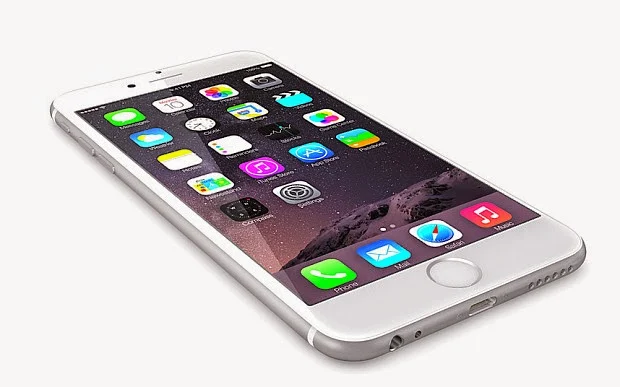The newly launched iPad Air 2 boasts the possibility of achieving a higher resolution Retina Display. The renowned developer Hamza Soodhas made a remarkable discovery by sighting the hidden features within the precious Apple’s codes. His discovery has shed light upon the new iPad’s ‘@3x assets’, which has the ability to provide a higher resolution ‘Retina Display’ screens for the upcoming new iPads.
The feature of @3x assets
The assets discovered by Sood are concerned with the Clock app’s interface in iOS 8.1 beta 2 that includes the clock’s face, hands as well as the center.Sood asserts that these graphical assets are generally offered in the ‘3x iPad’, ‘2x iPad’ and ‘iPad’ designations. The presence of the ‘3x’ PNG files specifically hints at super high-resolution iPad displays.
The graphical assets of normal ‘1x assets’ and ‘@2x assets’ are necessary for building the Retina displays but the new highly evolved and advanced ‘@3x assets’ are indicative of providing a higher resolutions display screens.
The Availability Of New Retina HD Panels
While introducing the iPhone 6 and 6 Plus in September Apple had revealed a new pixel dense screens which were dubbed as ‘Retina HD’. The Retina HD screen does require the presence of the ‘@3x assets’ for delivering the extra resolutions in a dignified manner.
The iOSdeveloperSood which has discovered the frameworks which contained the graphical assets labelled ‘3x ipad’ also suggest that it is highly possible that Apple would be gearing up to update its tablet with the Retina HD display panels in upcoming days.
The Current Display Panels of Apple Ipads
Apple is also rumoured to introduce the next generation iPad Air models with this upgraded display technology. However, the exact pixel density for such is kept under wraps but it would be greater delight for its consumers.
Currently the Apple iPads are loaded with the Retina Display devoid of the so called ‘@3x assets’as in:
The iPads available in the market even in its current form are already delightful, bright and colourful in terms of the display it offers to the consumers. If the Apple tends to decide upon using the Retina HD in the iPads then it would certainly take its pole position in tablet market with grace and applaud.The use of Retina HD display panels would be considered as a very intuitive and cunning move by Apple if it is done.
The feature of @3x assets
The assets discovered by Sood are concerned with the Clock app’s interface in iOS 8.1 beta 2 that includes the clock’s face, hands as well as the center.Sood asserts that these graphical assets are generally offered in the ‘3x iPad’, ‘2x iPad’ and ‘iPad’ designations. The presence of the ‘3x’ PNG files specifically hints at super high-resolution iPad displays.
The graphical assets of normal ‘1x assets’ and ‘@2x assets’ are necessary for building the Retina displays but the new highly evolved and advanced ‘@3x assets’ are indicative of providing a higher resolutions display screens.
The Availability Of New Retina HD Panels
While introducing the iPhone 6 and 6 Plus in September Apple had revealed a new pixel dense screens which were dubbed as ‘Retina HD’. The Retina HD screen does require the presence of the ‘@3x assets’ for delivering the extra resolutions in a dignified manner.
- The new Retina Display panels would be made available in
- 1334 by 750 pixels at 326 ppi for the 4.7 inch iPhone 6& 1920 by 1080 pixels at 401 ppi for the 5.5 inch iPhone 6 Plus.
The iOSdeveloperSood which has discovered the frameworks which contained the graphical assets labelled ‘3x ipad’ also suggest that it is highly possible that Apple would be gearing up to update its tablet with the Retina HD display panels in upcoming days.
The Current Display Panels of Apple Ipads
Apple is also rumoured to introduce the next generation iPad Air models with this upgraded display technology. However, the exact pixel density for such is kept under wraps but it would be greater delight for its consumers.
Currently the Apple iPads are loaded with the Retina Display devoid of the so called ‘@3x assets’as in:
- a. iPad Air with its 9.7 inch Retina Display with a commendable resolution of 2048 by 1536 pixels at 264 ppi.
- b. The Smaller variant iPad Mini have 7.9 inch Retina Display with similar resolution of 2048 by 1536 pixels at 326 ppi.
The iPads available in the market even in its current form are already delightful, bright and colourful in terms of the display it offers to the consumers. If the Apple tends to decide upon using the Retina HD in the iPads then it would certainly take its pole position in tablet market with grace and applaud.The use of Retina HD display panels would be considered as a very intuitive and cunning move by Apple if it is done.





